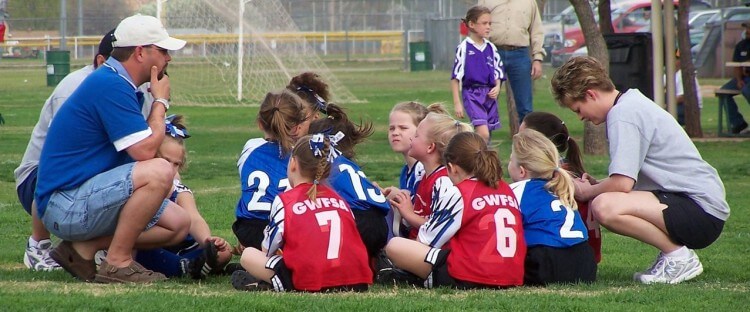How would you characterize your style of leadership? Most leadership styles of athletic coaches today tend to be ones where the coach is always leading, manipulating, and motivating players in specific ways which the coach believes will lead to winning. DeSensi (2014) expressed it this way: “Concern for the needs and aspirations of athletes, followers in this case, does not seem to be at the forefront of coaching/leading responsibilities, nor is nurturing a part of the leader’s intent” (p. 62).

In recent years, an alternative leadership type has emerged. Named “servant-leadership” this leadership style involves leaders who are primarily concerned with serving others and their needs. Servant leadership has unique elements that set it apart from other forms of leadership (Burton & Peachey, 2013). In contrast to other forms of leadership (e.g., transactional or transformational leadership) that mainly focus on the success of the organization, servant leaders are worried about the well-being of and serving the needs of the followers within that organization (Barbuto & Wheeler, 2006; Greenleaf, 1977; Senjaya, Sarros, & Santora, 2008).
Robert Greenleaf is credited for introducing the concept of servant-leadership. Since then others have taken his definition and developed leadership training modules to enhance coaching efficacy. One particular author, Larry Spears, who teaches at Gonzaga University, developed ten characteristics of servant-leadership and uses this model today to continue to educate aspiring leaders. By focusing on the relationship between the leader and follower, servant leadership encourages leaders to consider the needs of followers. The goal is to initially serve followers rather than to focus first on leading them. (DeSensi, 2014).
Practicing servant-leadership can be done in sports settings because many of the dimensions of servant leadership such as inspiring leadership are concepts well suited to athletic coaches, physical educators, and other practitioners of sport and exercise psychology (Rieke, Hammermeister, & Chase, 2008).
All of us who coach have tremendous opportunities to influence the lives of our student-athletes. This opportunity, along with motivation to complete my final graduate project at CWU, led med to create a website focused on helping coaches to develop their servant-leadership skills. I used Larry Spears’ ten characteristics of, Listening, Empathy, Healing, Awareness, Persuasion, Conceptualization, Foresight, Stewardship, Commitment to Growth and Building Community as guiding principles for coaches to learn servant-leadership. The website is live and available to everyone. All professionals including athletic directors, coaches, physical education teachers, and others who work with student-athletes can learn more about servant-leadership and employ this knowledge to enhance to sport experience. The website can be accessed at www.servantleadershipforcoaches.com.
References:
- Barbuto, J.E., & Wheeler, D.W. (2006). Scale development and construct clarification of servant leadership. Group & Organization Management, 31(3), 300-326.
- Burton, L., & Peachey, W. (2013). The call for servant leadership in intercollegiate athletics. Quest, 65, 354-371.
- DeSensi, J. (2014). Sport: An ethos based on values and servant leadership. Journal of Intercollegiate Sport, 7, 58-63.
- Greenleaf, R.K. (1977). Servant Leadership: A journey into the nature of legitimate power and greatness. New York, NY: Paulist.
- Rieke, M., Hammermeister, J., & Chase, M. (2008). Servant leadership in sport: A new paradigm for effective coach behavior. International Journal of Sports Science and Coaching, 3(2), 227-239.
- Sendjaya, S., Sarros, J.C., & Santora, J.C. (2008). Defining and measuring servant leadership behavior in organizations. Journal of Management Studies 45, 402-424.
